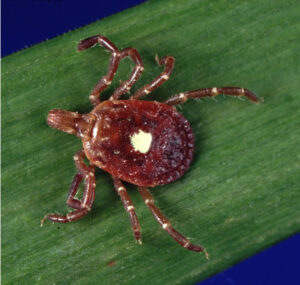
Weekly Update – July 30th – West Nile Virus Activity Increases
August 8, 2024
Weekly Update – August 13th – Mosquito Numbers Tick Up Slightly, More WNV Positive Samples
August 20, 2024
The number of common, human-biting mosquitoes has reached the low point of the season.
Cooler weather and slightly drier conditions led to a decrease in human-biting mosquitoes last week as we head toward the end of summer.
Every Monday night starting in mid-May through September, the Metropolitan Mosquito Control District sets out a variety of mosquito and black fly traps throughout the district and employs a network of sweep net collections done by employees and volunteers. Any insects collected are brought back to our lab on Tuesday to be identified throughout the week with maps published to show current mosquito and black fly activity.
On the evening of August 6th, MMCD CO2 traps collected the fewest number of human-biting mosquitoes since surveillance began on May 14th. Cooler, drier conditions and the natural decline in mosquitoes that occurs in later summer months are both factors as we see a continued drop in the last few weeks of summer.
According to MMCD Entomologist Dr. Scott Larson, "We are in a bit of a lull right now with the adult mosquitoes. This is the lowest average number of human-biting mosquitoes collected so far this year including the first week of surveillance in May. We did have a lot of rain last week though, and it wouldn’t surprise me if we see an uptick in collections next week." Last week's surveillance was actually pushed back from Monday to Tuesday because most areas of the District saw heavy rains, exceeding 2 inches in some places on Monday. There was a lot of air work necessary last week and it's possible some areas produced mosquitoes that would have hatched over the weekend.
As MMCD entomologists have stated previously, the graphs can be misleading because they only contain data for the most common human-biting species - mostly bugs in the Aedes family or Coquillettidia perturbans (cattail mosquitoes) - both of which feed primarily on mammals. Culex mosquitoes are not captured in the graph as they primarily feed on other animals like birds or frogs, depending on the species. A lot of Culex are opportunists, however, and will bite humans when in their proximity. As you can see, in many trap locations the number of Culex mosquitoes outnumber the "human-biting" species.
Below are the maps from Tuesday-Wednesday, August 6th-7th:
Lone Star ticks becoming more abundant in Minnesota
 Back in early June we reported about the first lone star tick of the year being found and it certainly wasn't the last! According to MMCD tick specialist, Janet Jarnefeld, there have been 31 lone star ticks turned in to MMCD or MDH in 2024 already and in all the years between 2009 and 2023 there were only 57 total!
Back in early June we reported about the first lone star tick of the year being found and it certainly wasn't the last! According to MMCD tick specialist, Janet Jarnefeld, there have been 31 lone star ticks turned in to MMCD or MDH in 2024 already and in all the years between 2009 and 2023 there were only 57 total!
Janet says it could be a result of short and long-term climate changes that has them venturing further north. We had a very mild winter in 2023-24 and that along with long-term warming trend means more lone star ticks might be surviving our cold winters. They are already established in states to our south like Missouri.
Lone star ticks are known for their ability to cause "alpha-gal syndrome," which is a condition that makes the host allergic to mammal meat (beef, pork, lamb, etc.). This tick is also capable of spreading other diseases like ehrlichiosis and tularemia.
Be on the lookout for this unique tick with the signature "lone star" on its back.






